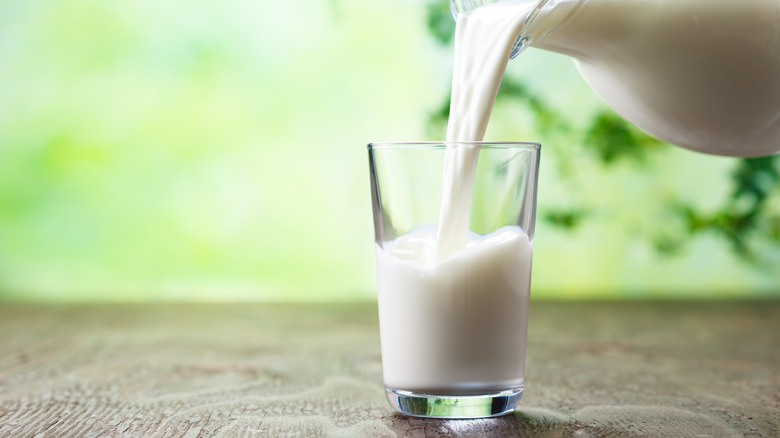How Is Lactose-Free Milk Different From Regular?
If you live a lactose-free lifestyle, you probably use lactose-free milk for your breakfasts and baking recipes. (And if you're wondering, no – lactose-free is actually not the same as dairy-free.) While this drink is similar to regular milk, there are some key differences between the two, and it all comes down to the chemistry behind these beverages.
Before jumping into the science, we should talk about taste. Regular milk has a smooth texture and slightly sweet flavor. While lactose-free milk is designed to mimic that flavor, it is actually over three times as sweet as regular milk. As previously mentioned, that's all due to lactose-free milk's unique makeup.
Most of our bodies produce a natural enzyme called lactase, which is a protein that helps people easily digest lactose (a natural sugar in dairy products.) While this enzyme is naturally occurring, some people aren't able to produce it, which means they can't break down lactose. To counteract the effects experienced by those with a lack of lactase (which you may know as lactose intolerance), lactose-free milk was created. Here's how this milk is chemically different.
The chemistry behind lactose-milk's sweet taste
Creating lactose-free milk is a relatively simple process. Natural lactase enzymes are added to regular milk. The added enzymes break down the naturally occurring lactose in the milk, which makes it much easier for those with a lactose intolerance to drink.
While this process of adding a new compound into regular milk is easy, it makes a big impact on the taste of the milk. This is because the lactase enzymes present in lactose-free milk split the lactose into two simpler compounds called glucose and galactose — a process that would normally occur inside the body. Like lactose, these are naturally occurring sugars, and they are exactly what give lactose-free milk a much sweeter taste than regular.
While the taste difference can be apparent to those that have just recently made the switch from regular milk, lactose-free milks with lower sweetness levels are being rolled out every day. If you do prefer the taste of lactose-free milk, it can easily be used in recipes that call for regular milk too.
Can you use lactose-free milk in lieu of regular?
Many people grow up drinking regular milk, but the lactose-free version wasn't popularized until 1985. While it still lags behind regular milk in terms of popularity, it is slowly gaining traction in the market alongside other alternative milks. If you have yet to taste lactose-free milk, there are many ways to use it, most the same as regular. Don't be afraid to give it a try.
You can substitute regular milk for lactose-free in most recipes — just make sure to take its sweeter taste into account. Adjust your added sugars as needed to avoid something overly sweet. Still, if your recipe only calls for very small amounts of milk, like in a simple cream cheese frosting or baked good, you probably won't notice the difference.
The one thing to remember when using lactose-free milk instead of regular is that this swap will not work in recipes that require the breakdown of lactose. If you're making something like yogurt, opt for regular milk instead. Otherwise, pick up that carton of lactose-free milk and pour to your heart's content.


